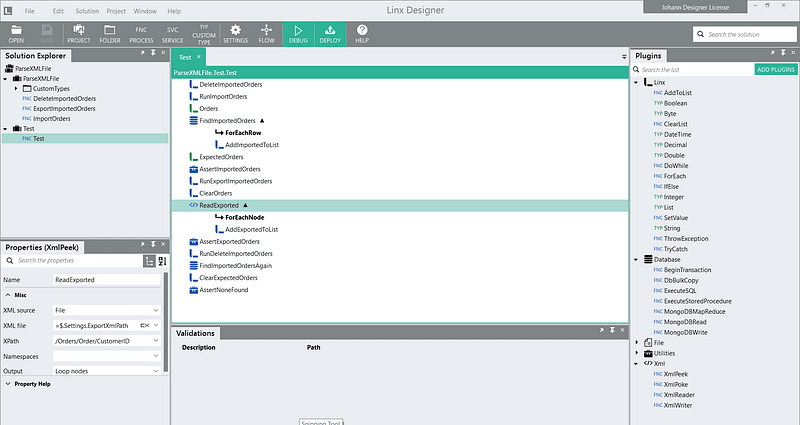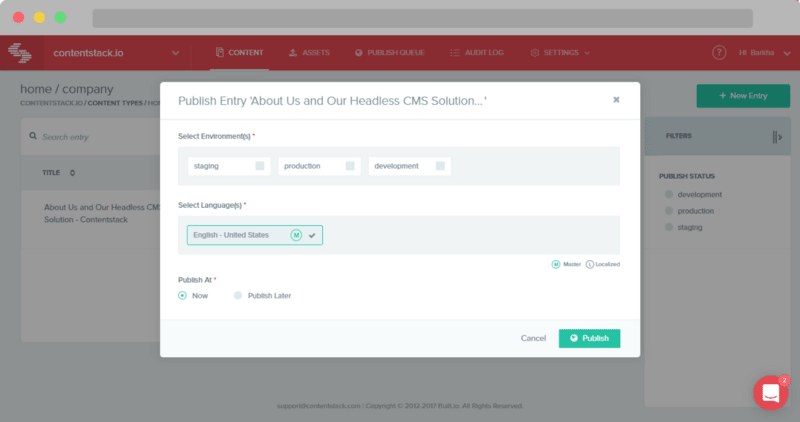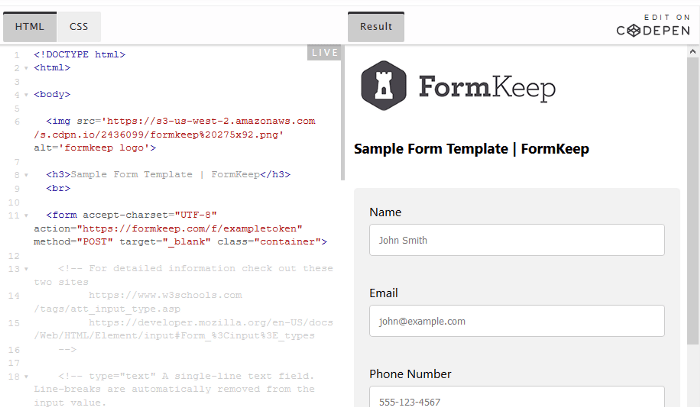Six of the best in class tools to accelerate backend development
If you’ve been working in IT development for any period of time, you likely have discovered that there are a number of routine tasks that take up a considerable amount of your time. You are often working under tight time-frames and/or under a budget. You may have built several libraries to handle various tasks, or have even established some solid frameworks which speed up your processes.
However, typically with each of these, they still require a considerable amount of coding. The growth in Backend as a Service (BaaS) tools has made it possible to convert many routine tasks into a series of modules or plugins which make it possible to perform high-level development tasks with writing very little code, or in some cases, none at all. These tools range widely in purpose and in scope; some handle some very specific tasks, while others can serve almost as a full development environment
In this article, we will take a look at a few very useful BaaS platforms that can enable you to move your projects into production much more quickly, and make your life as a developer considerably easier. We’ll start big, and then show examples of single-purpose tools that can also be of great use. These tools can work separately or together, depending on the purposes and requirements of your development projects.
Linx
Low-code Application Development and Automation
https://linx.software/
Linx is an incredibly powerful low code IDE, designed to be able to create and deploy automated applications easily. It helps connect many pre-built components, databases, and a wide range of microservices and tools seamlessly with an easy-to-use drag and drop interface.
Beyond simply plugging in different tools to work with each other, it allows users to complete many standard programming tasks, including a large set of pre-built functions, loops, and conditional statements. Applications and databases can be chosen from menus, and dragged and dropped into your development environment without having to write a single line of code. All you need to know is your business logic, and configure a few modules and you are off and running, cutting your development time to a fraction of what it was previously.
One of the best features of Linx is its ability to automate many processes, such as triggering events, calling on various services, and reading and writing transactions to and from your databases. It also makes it easy to connect to many external web services via their API. With the Linx application server, which includes SQL databases and file storage, your workflows and software can be deployed to the cloud with one click, making development and deployment relatively seamless.
Good For (Best Use Case)
Linx is extremely useful if you have many pre-built modules and need to make quick changes, but would rather not spend the hours necessary for creating new workflows. Even if developing with frameworks, typically creating new modules involves writing some code; Linx helps remove this necessity.
It is ideally suited for organizations who need to make many application changes on a regular basis. The ease of use makes it possible for Business Analysts to be able to make many of the changes at a high level without the need to write any code at all.
Pros/Cons
It is very useful for Business Systems Analysts who may wish to be able to make changes, test out workflows, and/or deploy existing development tools in different configurations without the requisite coding work.
While it shares some similarities with ETL and Business Process Management tools, it’s more flexible than many of those designed for specific tasks. While it is not an API management tool in itself, it integrates well with many APIs, and specifically for those needed within the application development process.
Pricing
Linx Application Designer IDE: Free
Linx Application Server: $149/month and up.
Content Stack
Headless CMS
https://www.contentstack.com/
Contentstack is a fully headless API-driven content management system designed particularly for enterprise-level organizations.
For companies that wish to integrate user-created content with existing systems, working with a remotely hosted headless CMS can make development and launching content quick and seamless.
Beyond the need to install a weighty locally based CMS for hosting content on your site, ContentStack, due to its powerful APIs, enables content to be able to be deployed quickly and consistently to any media format immediately.
For organizations with highly structured content deployment needs, it enables the creation of multiple environments including from development, testing, staging, and production, and with the option of automated content releases based on scheduling. Contentstack has built-in approval workflow design, and provides functionality for easy versioning including the ability to perform quick rollbacks.
Good For (Best Use Case)
Contentstack can be an ideal solution for large online businesses with large amounts of content which need to be updated frequently across multiple platforms by multiple users, such as an online news outlet or publishing company.
Pros/Cons
It’s strength is in its flexibility and power. It is well designed for corporate environments, particularly for complex content deployment protocols. It is, however, a bit pricey for smaller organizations, so might be a bit of out scope for companies with lower budgets.
Pricing
$3500/month
Auth0
Authentication as a Service Platform
https://auth0.com/
Managing user credentials can be tremendously time-consuming. Something as simple as setting up a basic set of authentication rules, ensuring the identity of users, and ensuring sessions are setup properly so that access is managed accurately is trouble enough. But if you have a large set of users across a large set of applications that all need to be coordinated? This is enough to drive any developer nuts. You need your users to be able to log in, stay logged in, be recognized, while at the same time keeping their credentials secure. On top of this, you don’t want to irritate your users, so you want to implement single sign-on, and effort-free access.
Auth0 provides a universal authentication and authorization platform which will work across multiple devices without the massive level of development normally required.
Good For (Best Use Case)
Auth0 is helpful for everything from small businesses and organizations to large enterprise-level operations. It will work ideally for small situations but will easily scale up to require dual-authentication, and conform to international privacy regulations.
Pros/Cons
Auth0 can remove literally months of work, and can be implemented quickly and cleanly. It will connect to virtually any technology stack, provides strong security, is highly customizable, and provides fast and reliable performance.
There are very few drawbacks, as the basic level is free. You can pay more for increased log retention, more social identity providers, customization, enterprise-level single sign ons, and more.
Pricing
Developer Plans from $13 up to $ 745/mo.
Formkeep
https://formkeep.com/
Form Handling Service
Formkeep is simple BaaS tool for dealing form backend data handling. Managing the backend of forms can be somewhat time-consuming, and it is certainly not fun. Typically you will need to do everything from making sure it works properly to ensuring the right sort of data is provided, including required fields with the correct datatypes, and to deal with spam submissions. While none of this is difficult, it can be time-consuming, particularly if you need to have multiple forms on a site.
Post data is stored within the cloud, and will provide reporting and data management capabilities, and allows for integrating applications in multiple formats. Output can be submitted via API to email, database, or another web service.
Good For (Best Use Case)
Formkeep is ideal for front-end designers who don’t wish to worry about handling the backend. Enables creating many forms quickly without hours spent making sure the processing works.
Pros/Cons
It’s easy to use. While it’s not free, the cost is relatively low.
Pricing
$4.99/month (1 form) and up.
Opencart
E-commerce Platform
https://www.opencart.com/
Opencart is a free, open source e-commerce platform. It provides many of the features one would expect from many commercial e-commerce tools. Due to its internal structure, it is highly configurable and virtually limitless in scope: you can work with an unlimited number of categories, products, and manufacturers.
It provides access to over 20 different payment gateways and is fully PCI compliant, and has support for multiple currencies and languages. It also comes with a powerful dashboard for managing multiple users with different roles and for monitoring transactions.
To use it requires downloading it, installing it on your server, and configuring it.
Good For (Best Use Case)
Opencart is excellent for companies who want a robust e-commerce solution that is comparable to many of the out-of-the-box solutions but do not wish to be stuck into a cookie-cutter framework. It is highly powerful and can work well for companies who wish to build a solid e-commerce background for their online business from the ground-up without having to re-invent the wheel.
Pros/Cons
On the positive side, there are no up-front costs for the software and very little required ongoing maintenance. Its ability to scale, and its flexibility make it a very strong choice. However, as it is free, it comes with no support. All hosting, installation, configuration, and maintenance is the responsibility of the user.
That said, they have an associated cloud service, “OpenCloud” which one can purchase at rates related to usage.
Pricing
Software: Free. Cloud-based: $30–190/month*
Conclusion
Instead of having to rely on coding every aspect of your applications from scratch it makes sense to make use of some of these higher-level tools to handle many of your business-critical functions.
This is really only a small set of useful BaaS tools that exist which can help improve your development processes, and there are many other high-quality tools that can help improve your processes however these are some of the best that we’ve found. You can’t go wrong with any of these options.
The post The best BaaS tools to accelerate backend development appeared first on Linx.











Oldest comments (0)